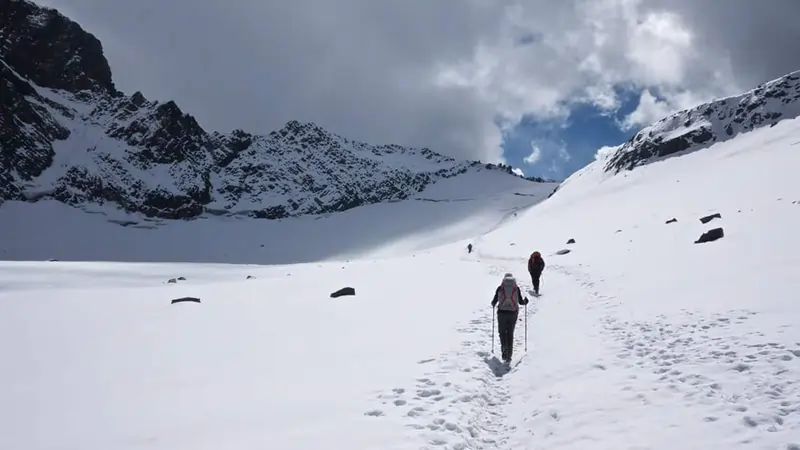Mountain treks offer pure thrill, but high zones bring real risks. You might trek to Everest Base Camp or explore other peaks. Knowing this trekking safety guide can save your life and those near you. Height sickness and fast weather shifts test every hiker who climbs these trails. The peaks need your full respect and smart planning from the start.
Recognizing Altitude Sickness Early

Your body fights for air when you climb higher each day. The drop in oxygen makes your system struggle to meet energy demands. As this Trekking Safety Guide explains, such conditions can trigger AMS (Acute Mountain Sickness) — the most common health risk in high-altitude regions. Symptoms often begin once you cross 2,500 meters and may include:
Head pain that will not stop
Sick feeling or throwing up
Weak body and no wish to eat
Dizzy spells or hard breathing
Weather and Navigation Emergency Protocols

Storm clouds roll in fast when you trek through mountain zones. White fog, heavy snow, and wild winds can shake your nerves quickly. Your calm mind keeps you safe when nature turns against your path.
Follow these safety steps when conditions worsen:
Low sight means stop walking and stay close as one group.
Keep off ridge tops when lightning starts to flash and crackle.
Wear extra clothes before your body starts to shake from the cold.
Mark your spot or use GPS to know where you stand.
Tools like Gaia GPS, Maps.me, or a handheld GPS work when phones die. These apps stay live even when cell towers fade from range far. This trekking safety guide points you toward tools that actually function up high.
High Altitude First Aid Essentials

A small, well-packed medical kit changes outcomes when emergencies strike your team. Your bag must hold these key items:
Diamox pills are only available after a doctor gives you the green light
ORS packets and tablets that clean water fast and safely
Wraps for cuts, cream that kills germs
Pulse reader
Foil blanket and loud whistle
Communication and Rescue Steps

Tell someone back home your full route plan before you leave
Group leads must pack walkie-talkies or satellite phones that reach help fast
Keep hurt people warm and give them water while waiting for aid
Write down when symptoms start and watch for any shifts or changes
When the case turns bad, getting lower fast becomes your main cure. No drug or rest beats dropping altitude when your body starts to fail. This trekking safety guide stresses that descent saves more lives than any other step.
High treks reshape how you see the world and test your limits. But joy comes only when you stay safe through smart choices each day. Watch for signs, pack the right gear, and honor the mountain’s raw power.
When a crisis strikes, your grasp of this trekking safety guide turns into your best chance to make it through and walk back down alive.
Read more trekking insights on the HimTrek Travel Blog



0 Comment